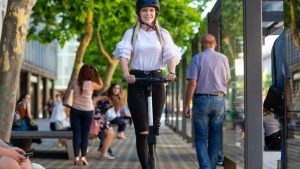Can You Use An Electric Scooter Like a Regular Scooter? If You have electric Scooter , You can use it regular Scooter without power. Electric Scooters are designed for versatility, allowing riders the option to scooter with no power.
Electric scooters have become a popular mode of urban transportation, offering the perfect blend of convenience and environmentally-friendly travel. Not only do they provide a quick way to zip around the city, but they also cater to those moments when you wish to enjoy a traditional scoot.
The dual functionality enhances the scooter’s usability, particularly when conserving battery life or maneuvering through areas where electric assistance is impractical.
These scooters, with their lightweight designs, effortlessly switch between powered and manual modes, providing a practical solution for last-mile commutes, leisurely rides, and fitness enthusiasts.
Riders appreciate the flexibility of an electric scooter, as it ensures that even if the battery depletes, the journey doesn’t have to end.
Table of Contents
ToggleElectric Scooter Basics: What You Need To Know
Electric scooters are taking the world by storm. They offer an eco-friendly, efficient way to travel short distances. Whether you’re commuting to work or just out for a leisurely ride, understanding the basics of electric scooters is key. Let’s explore what makes these gadgets tick and if you can use them like traditional kick scooters.
The Anatomy Of An Electric Scooter
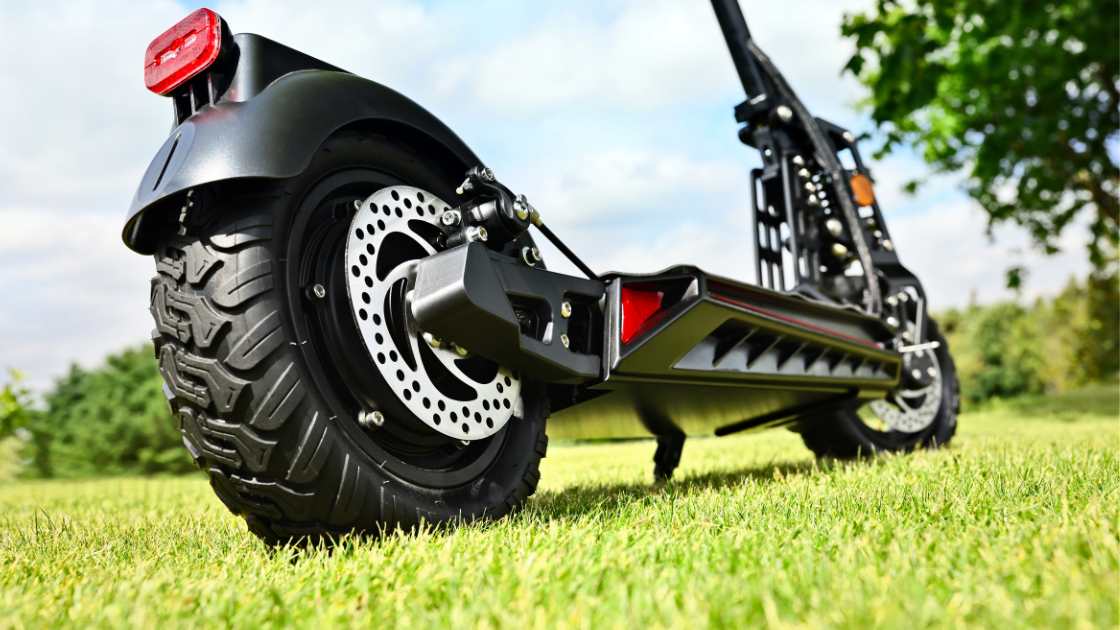
An electric scooter shares several features with its manual cousin, yet it comes packed with modern technology. To get familiar, let’s break down its main components:
- Frame: The sturdy skeleton that holds everything together.
- Battery: The power source that fuels the scooter.
- Motor: Typically located in the wheel, it drives the scooter forward.
- Handlebars: Equipped with a throttle and brakes for control.
- Deck: The platform you stand on, which houses the battery beneath.
- Wheels: They may be solid or air-filled for shock absorption.
How Electric Scooters Work
An electric scooter operates on a simple principle. Press the throttle and the motor engages, propelling you forward. Here’s a quick rundown of its operation:
- Switch the scooter on with a button or key.
- Engage the throttle to draw power from the battery.
- The motor activates, turning the wheels.
- Use handlebar controls to steer, accelerate, and brake.
To slow down or stop, release the throttle and press the brake lever. Some models even offer regenerative braking, charging the battery as you slow down. Unlike traditional scooters, electric variants use a motor, so kicking is not necessary but still possible when the battery runs out. This dual functionality makes them incredibly versatile for riders.
Maneuvering With Muscle: Manual Mode Operation
Electric scooters offer a swift ride with the push of a button. Sometimes, the power goes out. Can you still ride it like a regular scooter? Yes, it’s called manual mode operation. This section dives into how to kick-push your electric scooter when it’s time to save on battery or when the power runs out.
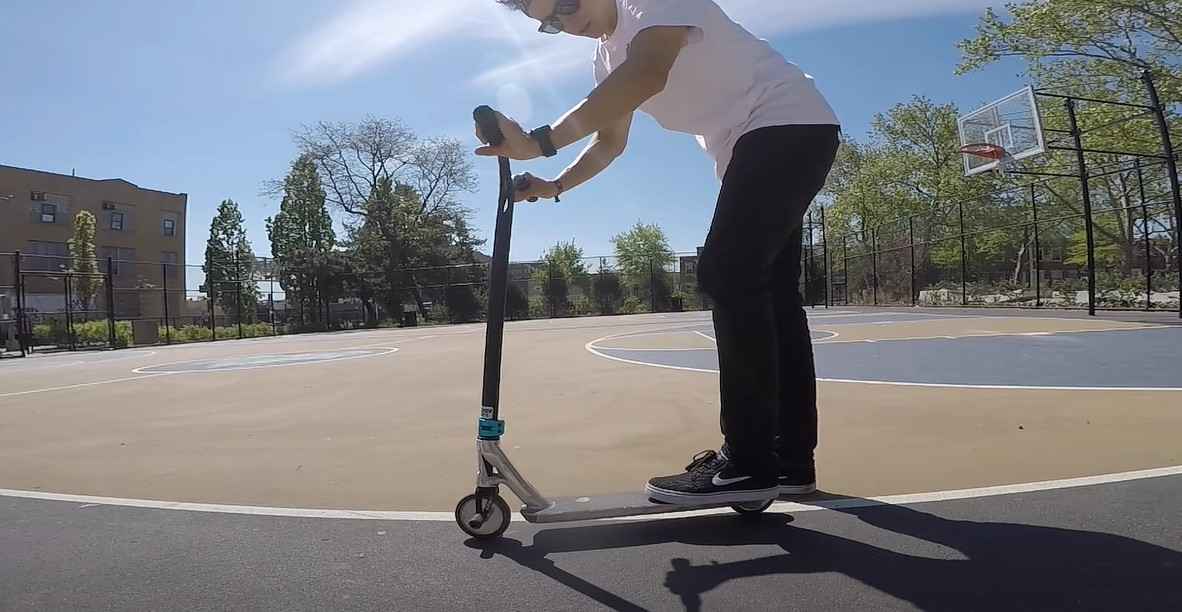
Riding Without Power: A Guide
To ride your electric scooter manually:
- Check the scooter’s design – Some have a freewheel mechanism for easy use.
- Turn off the power to enable manual mode.
- Place one foot on the scooter, use the other to push off.
- Balance is key – keep your weight centered.
- Glide and kick-push – enjoy the ride!
Remember, manual riding requires more effort and balance than electric mode.
The Impact On Durability And Warranty
- Riding manually may affect durability: Stress on the wheels and deck increases.
- Warranty terms vary : Some cover manual use; others don’t. Check your scooters’ guide.
- Regular maintenance is necessary : It helps prevent excess wear from manual riding.
It’s essential to understand your scooter’s capabilities. While manual mode is possible, regular use might lead to quicker wear. Always consult your manual for warranty specifics.
Comparative Dynamics: Electric Vs. Manual Scooters
Deciding between an electric scooter and a manual one? It’s essential to know how they stack up. Let’s delve into their dynamics to see how they compare in speed, effort, control, and stability.
Speed And Effort
Electric scooters provide a swift ride with minimal effort. They come with motors, allowing riders to reach higher speeds than manual scooters. Here’s a quick comparison:
| Electric Scooter | Manual Scooter |
|---|---|
| Quick acceleration | Depends on rider’s effort |
| Less physical work | More exercise |
| Higher top speed | Speed limited by rider |
- Travel farther and faster
- Less tiredness after your trip
Control And Stability
When it comes to control, manual scooters can be less intimidating for new riders. Their simplicity allows for immediate adaptation. Let’s break down the differences:
| Feature | Electric Scooter | Manual Scooter |
|---|---|---|
| Handling | May require practice | Easy to maneuver |
| Braking system | Electronic or disc brakes | Foot or handbrake |
| Weight | Heavier, stable at speed | Lighter, easy to carry |
- Electric scooters often include advanced features for control, such as speed settings and cruise control.
- Manual scooters keep you active and agile, improving your balance and coordination.
Battery-life Scenarios: When To Push, Not Ride
Picture a sunny day, your electric scooter gliding smoothly down the street. Suddenly, it slows, the battery indicator flashes, and you’re stranded. What next? It’s essential to know when to switch from electric cruising to manual kicking. Let’s explore the art of manual scootering, focusing on how to maximize battery life and when to turn your e-scooter into a regular one.
Drained Battery? Keep Rolling!
Don’t worry if your scooter battery dies. Your ride isn’t over. Most electric scooters can transform into traditional kick scooters. It means you can push your way forward without any juice left. Consider these tips:
- Check the manual for safety first. Ensure your model allows for manual use.
- Maintain a steady pace to avoid damaging the motor.
- Plan your route. Opt for flat terrain to make pushing easier.
Preserving Battery Life In Manual Mode
Using your electric scooter manually isn’t just a backup plan; it’s a strategic move to save battery power for later. Here’s how you can preserve your e-scooter’s energy:
| Action | Battery Saving Tactic |
|---|---|
| Start manually | Kick off your journey with a manual push to reduce initial energy drain. |
| Alternate modes | Mix electric and manual riding, especially on shorter trips. |
| Avoid steep hills | Push up inclines to prevent heavy battery use on challenging terrains. |
Physical Considerations: Weight And Resistance Factors
Physical Considerations: Weight and Resistance Factors play vital roles when shifting from an electric to a manual mode in scooters. Unlike their traditional counterparts, electric scooters house batteries and motors.
The Challenge Of Heavier Electric Models
Electric scooters showcase significant weight because of their internal components. This creates a unique set of challenges for riders wishing to use them just like regular scooters. Here are key points:
- Increased Effort: The added mass demands more muscle power.
- Momentum Management: Heavier models require more strength for starts and stops.
- Carry Consideration: Lifting and moving such scooters is harder, especially up stairs or onto public transport.
Pushing Efficiency: Minimizing Drag
Aiming for efficient use in manual mode involves minimizing drag. Practical tips include:
| Strategy | Benefit |
|---|---|
| Inflate Tires Properly | Reduces rolling resistance. |
| Straight Riding Path | Lessens air resistance. |
| Streamlined Stance | Improves aerodynamics. |
Regular maintenance also mitigates drag and preserves pushing efficiency.
Legal And Safety Implications Of Manual Riding
The question of whether one can use an electric scooter as a regular scooter touches upon the vital aspects of legality and safety. It is crucial to understand both the legal and safety implications associated with manually riding an electric scooter to ensure compliance and prevent injuries.
Regulatory Perspective On Electric Scooter Usage
Countries and regions have distinct laws for electric scooters. Knowing these regulations is essential for riders. Some places allow manual operation, while others restrict it, prioritizing powered mode only. It is wise to confirm local ordinances to avoid penalties.
- Verify local traffic laws related to electric scooters.
- Check for any restrictions on manual scooter use in particular areas.
- Understand the legal requirements for helmets, lights, and reflectors.
Safety Measures And Precautions
Riding an electric scooter manually involves risks. Precautionary steps are crucial to safeguard oneself and others. Key safety gear and mindful practices can drastically reduce the likelihood of mishaps.
| Safety Gear | Riding Practices |
|---|---|
| Helmet | Avoid crowded areas |
| Knee Pads | Regular brake checks |
| Elbow Pads | Mindful of pedestrians |
| Reflective Clothing | Maintain a moderate speed |
Embrace a safety-first mindset. Incorporate protective gear such as helmets, knee and elbow pads, and high-visibility apparel. Perform consistent equipment checks, especially brakes and tires, to ensure your electric scooter is ready for a safe journey, powered or not.
Adhere to recommended speeds and be cautious around pedestrians. Even when used manually, electric scooters can reach considerable speeds and pose a threat if not handled responsibly.
Pros And Cons: Switching Between Riding Modes
Many riders wonder about using an electric scooter manually. This raises questions about the benefits and drawbacks of dual riding modes. Let’s explore the upsides and challenges of switching between electric and manual modes.
Advantages Of Dual-mode Riding
Flexibility reigns as the top advantage when you switch between electric and manual riding. Riders enjoy the freedom to choose how they ride based on their needs or preferences at the moment. When the battery runs low, the scooter doesn’t become a dead weight. You can simply push it along like a regular scooter.
- Use less battery in crowded places
- Exercise by manually propelling
- No need to wait for a recharge
Another perk is increased accessibility. Some areas restrict motorized vehicles, but by switching off the electric motor, these areas remain accessible.
Compromising On Performance Or Comfort
Yet, a dual-mode system isn’t without its setbacks. Electric scooters designed to also function manually often compromise on certain features. The added weight of the motor and battery can make manual riding more labor-intensive than with a regular scooter.
| Feature | Electric Mode | Manual Mode |
|---|---|---|
| Weight | Heavier | Harder to push |
| Riding Effort | Minimal | Increased |
| Speed | Faster | Slower |
Comfort can take a hit, too, with some electric scooters showcasing a design optimized for electric propulsion rather than manual use. The deck might be higher, or the handlebars set for a stand-up ride, making them awkward for manual scooting.
Maintenance Tips For Dual-use Electric Scooters
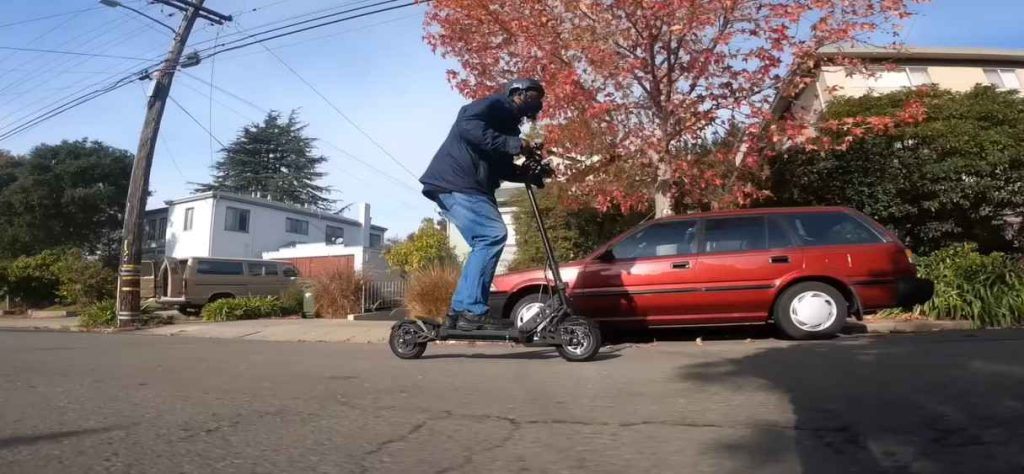
Embracing the versatility of dual-use electric scooters adds an exciting twist to personal transportation. Proper maintenance ensures a smooth transition between electric and manual modes. Follow these essential tips to keep your dual-purpose scooter performing at its best.
Routine Checks For Manual And Electric Use
Regular inspections keep your scooter reliable. Here’s what to do:
- Check the tires: Look for wear and proper inflation.
- Examine brakes: Ensure they respond effectively.
- Test the lights: Keep them bright for safety.
- Secure connections: Tighten any loose parts.
- Lubricate moving parts: Reduce friction for a smoother ride.
- Battery care: Charge it fully and store it properly.
Extending The Life Of Your Scooter
Longevity comes from dedicated care. Here’s how:
- Clean regularly: Dust and dirt can damage parts over time.
- Avoid water: Keep electronics dry to prevent malfunctions.
- Store properly: Keep your scooter in a dry, cool place.
- Follow weight limits: Overloading leads to excessive wear.
- Use recommended parts: Off-brand replacements may harm your scooter.
Innovative Designs And Future Trends
An evolving landscape of urban mobility pushes electric scooters to the forefront. Designers blend technology and practicality, shaping how we ride. Electric scooters, once futuristic ideas, blossom into diverse models. They adapt to fit rider’s needs. This section delves into how electric scooters and traditional scooters merge, and the trends we might soon see.
Hybrid Scooters: Fusing Manual And Electric Tech
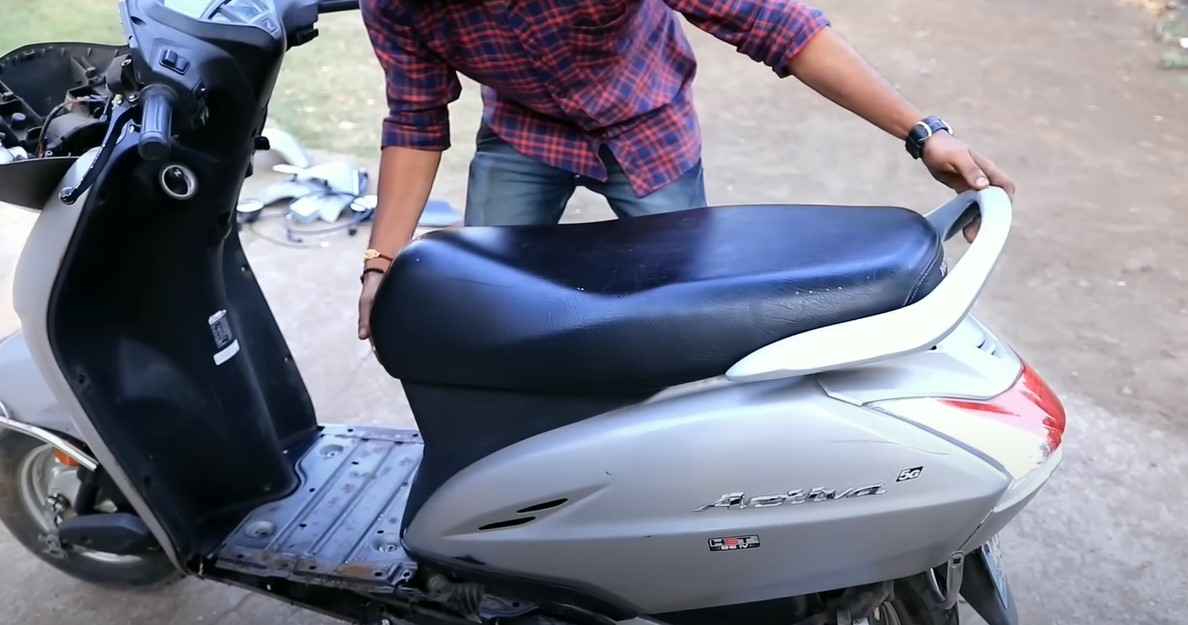
Imagine a scooter that switches from electric to manual power with ease. That’s a hybrid scooter. These models grant the freedom to glide with a motor or kick-push for exercise.
- Convenient for battery saving: Use muscle power when the battery dips.
- Flexibility on the go: Alternate between modes based on terrain or traffic.
- Multi-purpose use: Ideal for leisure or the last-mile trip post-commuting.
| Feature | Electric Mode | Manual Mode |
|---|---|---|
| Speed | Speedy, less effort | Controlled, more activity |
| Battery Use | Uses power | Conversation |
| Rider Control | Easy steering | Full rider input |
The Evolution Of User Preferences
Riders seek agility and convenience in urban environments. Personal tastes drive electric scooter innovation:
- Portable designs: Scooters that fold and fit in tight spaces.
- Eco-friendly options: Demand surges for green, efficient transport.
- Customization: Riders love to personalize scooters’ looks and features.
Future scooters could feature:
- Integrated GPS systems for navigation and tracking.
- Tough materials for longevity and resilience.
- Smart systems to sync with mobile devices.
Frequently Asked Questions On Can You Use An electric scooter like A Regular scooter
What Is The Difference Between Electric Scooter And Normal Scooter?
An electric scooter is powered by a motor and battery, whereas a normal scooter is manually propelled using physical effort. Electric scooters offer easier commuting with less physical exertion and have rechargeable batteries.
Is Riding An Electric Scooter Like Riding A Bike?
Riding an electric scooter differs from biking. It requires balancing on a narrower platform and handling a throttle. Both activities need coordination but have distinct skill sets and body movements. Safety gear is essential for each.
Why Are Electric Scooters Better Than Normal Scooters?
Electric scooters are eco-friendly, reducing carbon emissions. They offer cost-effective commuting with low maintenance needs. Their quiet operation enhances noise pollution control.
Can You Use An Electric Scooter Without The Motor?
Yes, you can use an electric scooter without the motor by pushing it like a traditional kick scooter. However, it might be heavier and less efficient due to the motor’s extra weight.
Conclusion
An electric scooter’s versatility brings the best of both worlds to your urban travels. Handy as a conventional scooter when needed, it’s clear that e-scooters offer an efficient stride in modern commuting. Remember, safety and local laws should guide your ride, whether powered or manual.
Consider your options, and take the journey that fits your pace.


